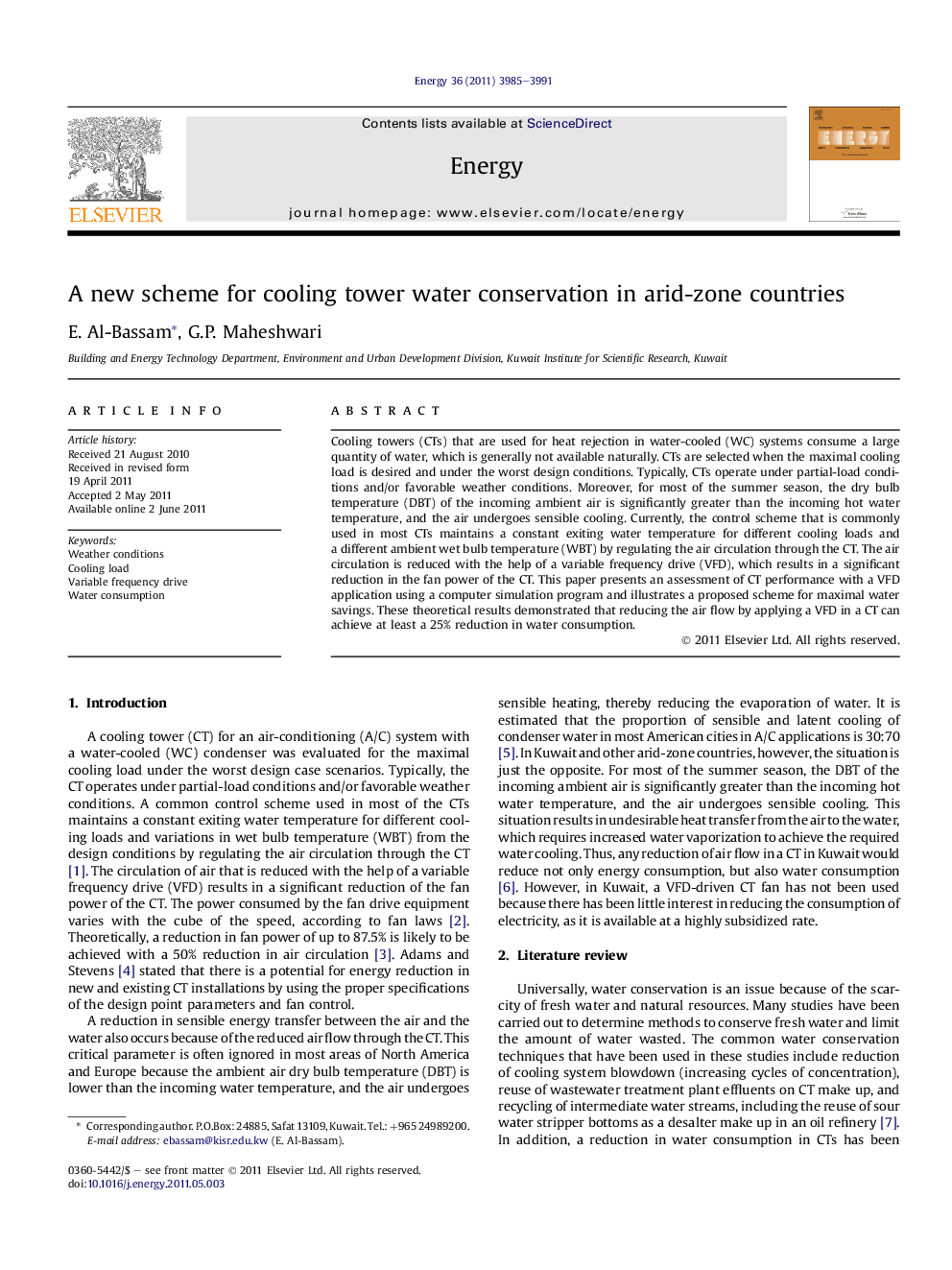| Article ID | Journal | Published Year | Pages | File Type |
|---|---|---|---|---|
| 1734156 | Energy | 2011 | 7 Pages |
Cooling towers (CTs) that are used for heat rejection in water-cooled (WC) systems consume a large quantity of water, which is generally not available naturally. CTs are selected when the maximal cooling load is desired and under the worst design conditions. Typically, CTs operate under partial-load conditions and/or favorable weather conditions. Moreover, for most of the summer season, the dry bulb temperature (DBT) of the incoming ambient air is significantly greater than the incoming hot water temperature, and the air undergoes sensible cooling. Currently, the control scheme that is commonly used in most CTs maintains a constant exiting water temperature for different cooling loads and a different ambient wet bulb temperature (WBT) by regulating the air circulation through the CT. The air circulation is reduced with the help of a variable frequency drive (VFD), which results in a significant reduction in the fan power of the CT. This paper presents an assessment of CT performance with a VFD application using a computer simulation program and illustrates a proposed scheme for maximal water savings. These theoretical results demonstrated that reducing the air flow by applying a VFD in a CT can achieve at least a 25% reduction in water consumption.
► Minimizing the self-cooling of the air lead to reduction of water consumption in CT. ► Differential temperature sensor is proposed to maintain a zero value between the measured inlet water and exiting air temperatures. ► The proposed differential temperature control will regulate the speed of CT fan with VFD. ► Additional supported control is proposed to ensure that exiting water temperature is equivalent to the set value temperature.
